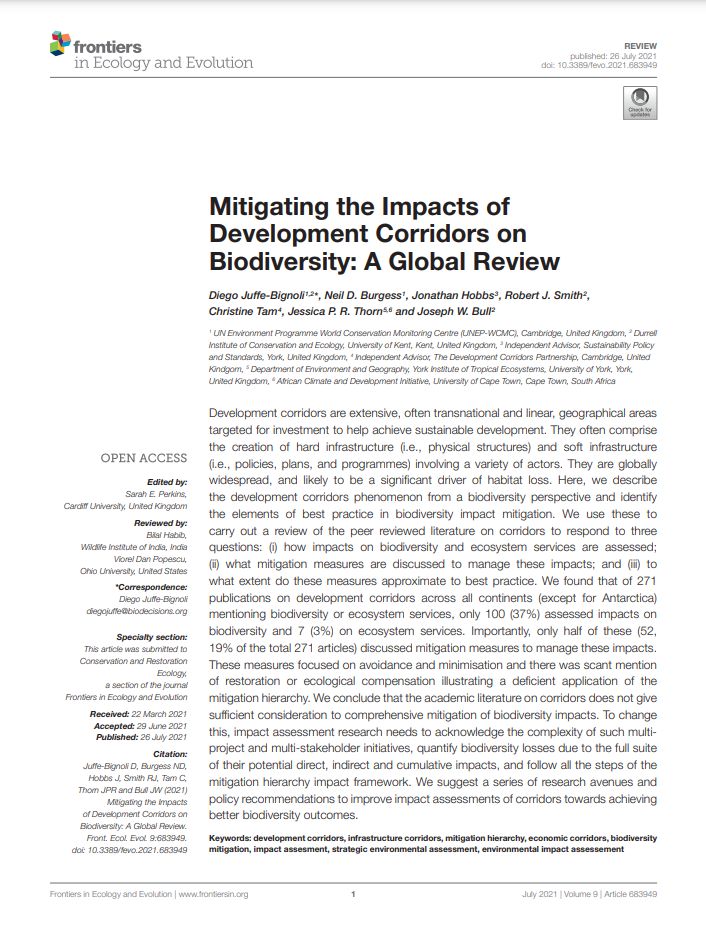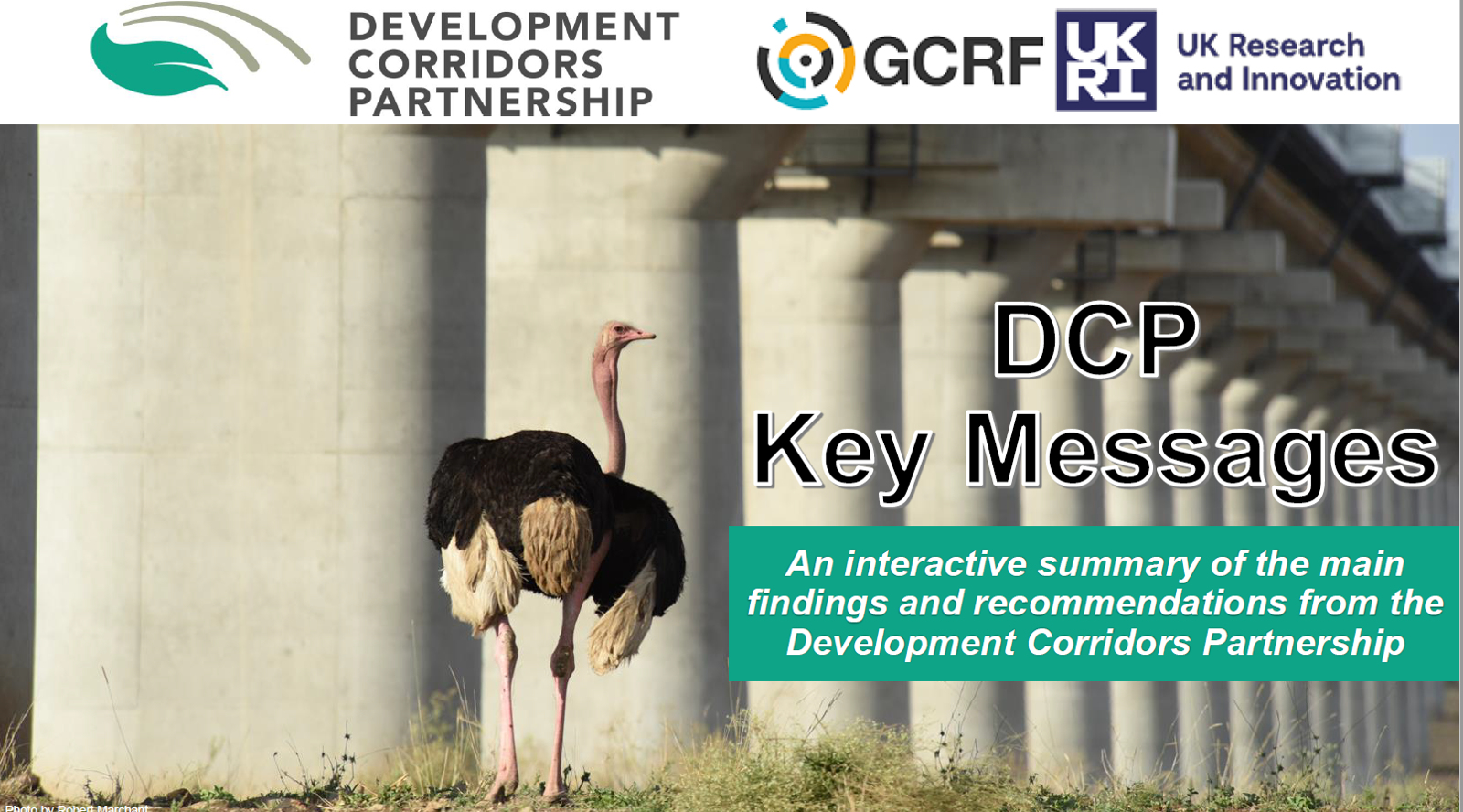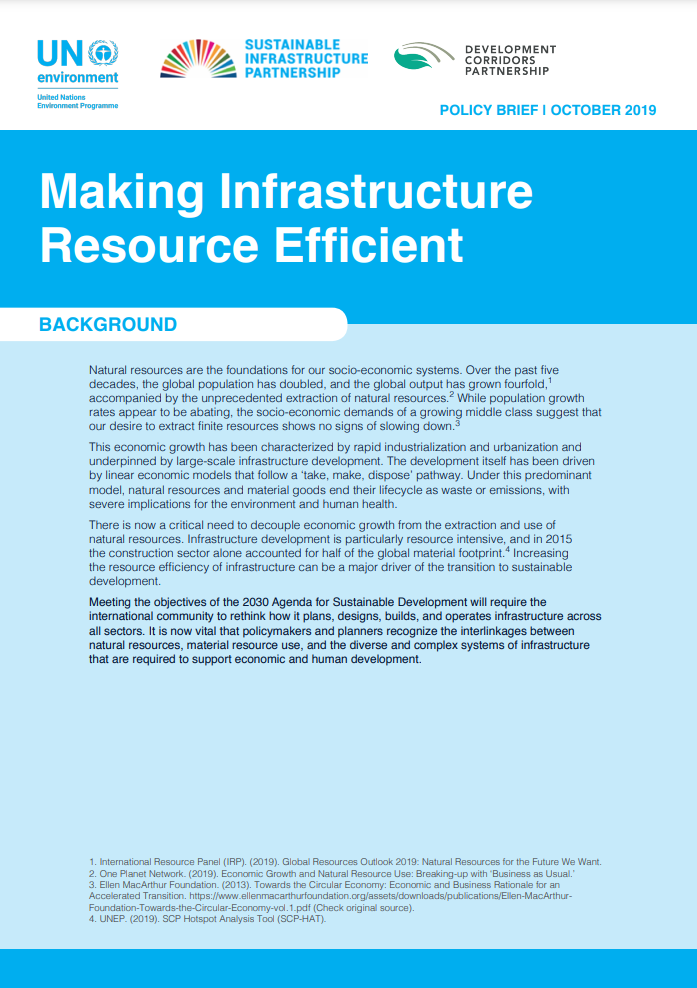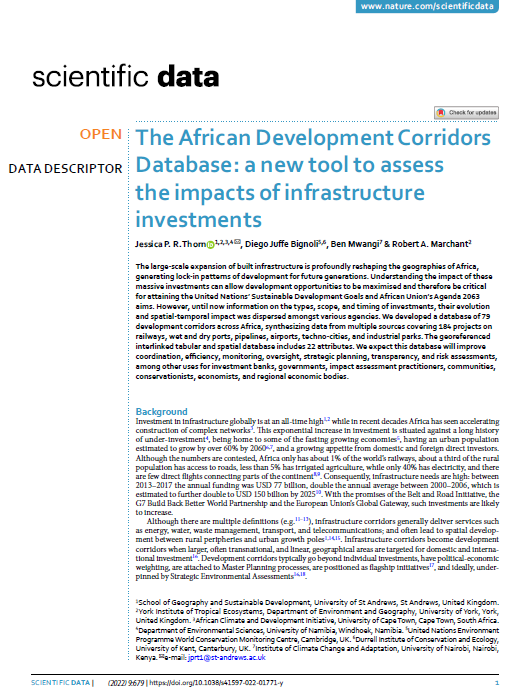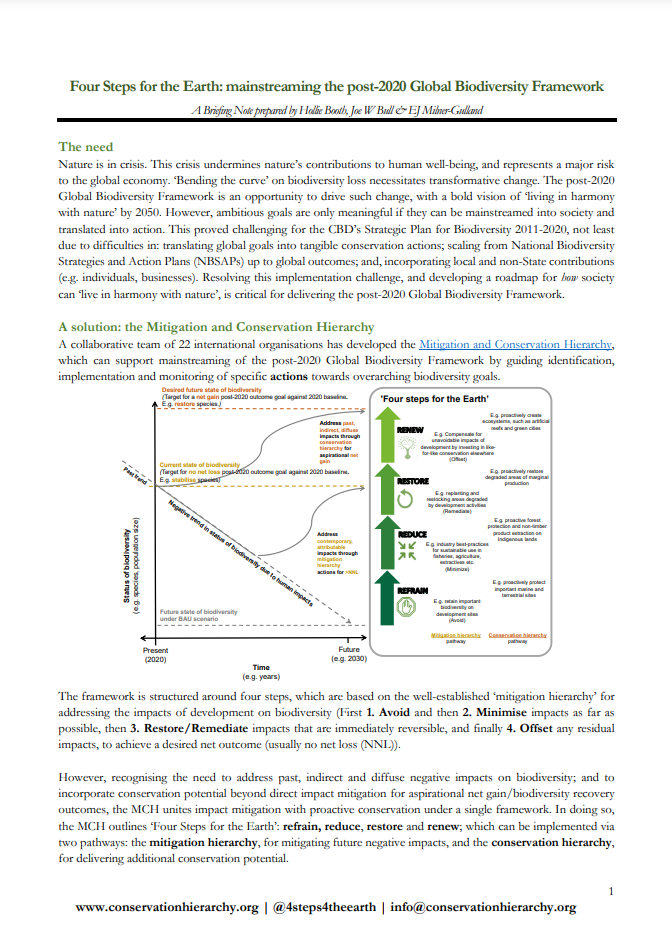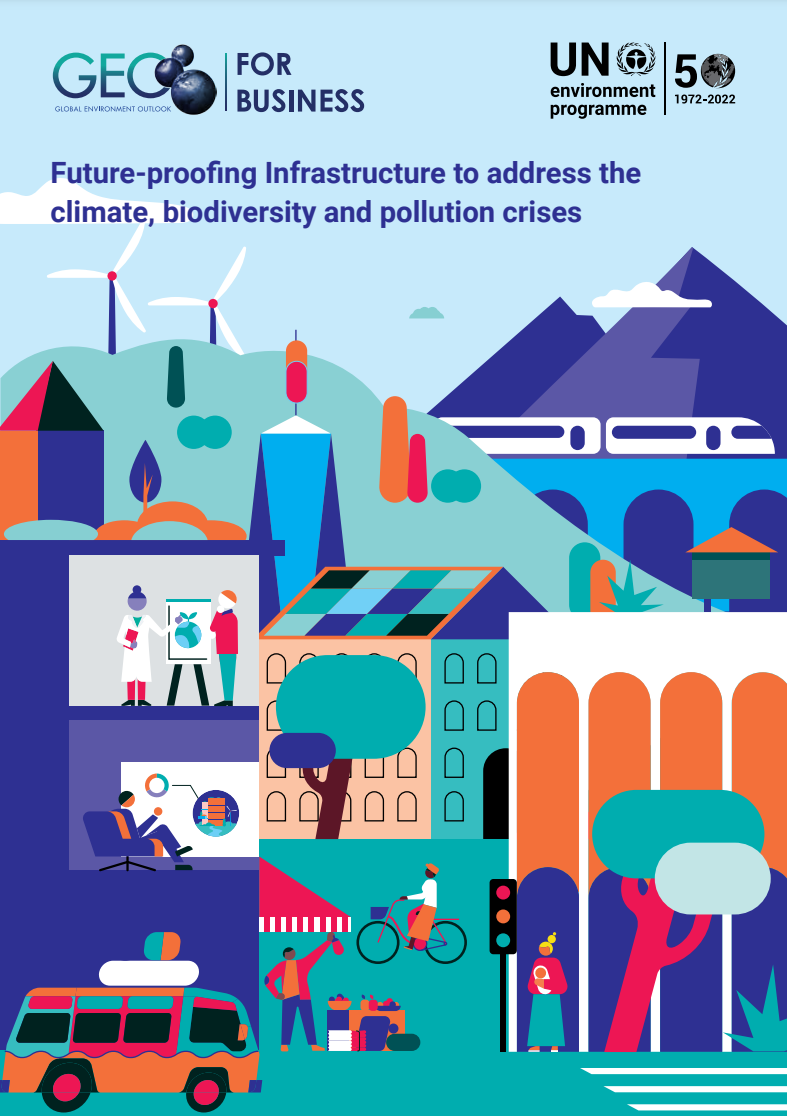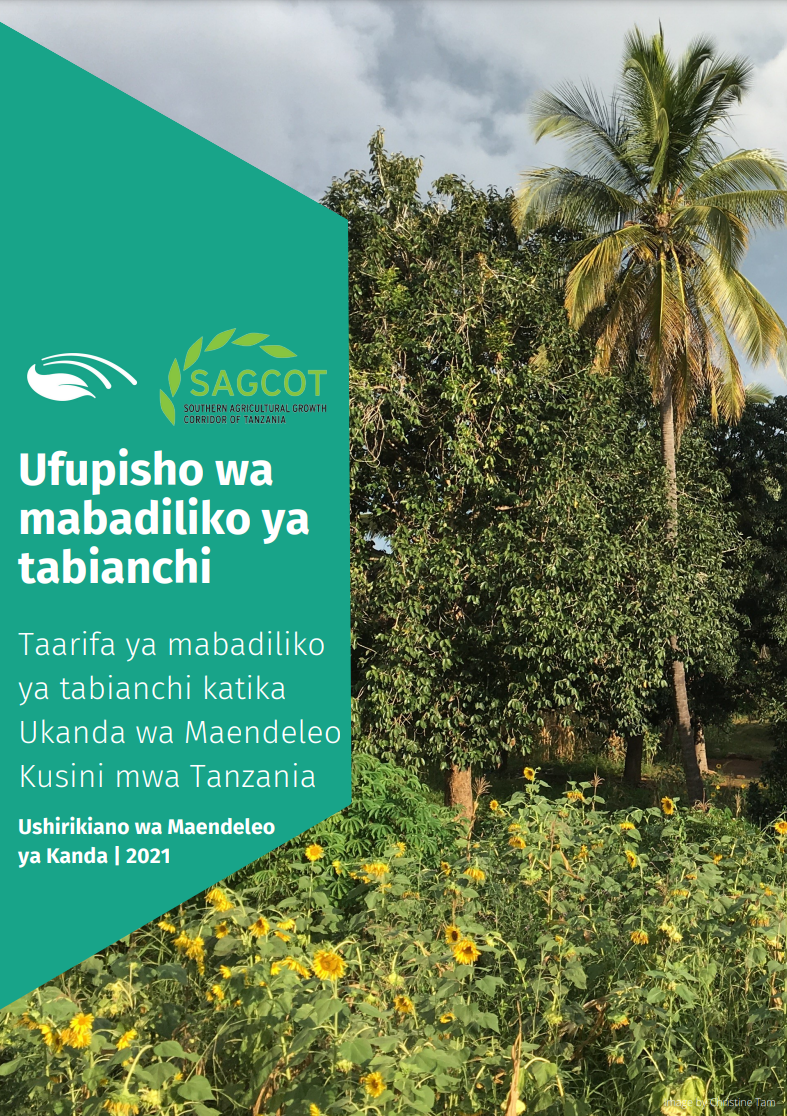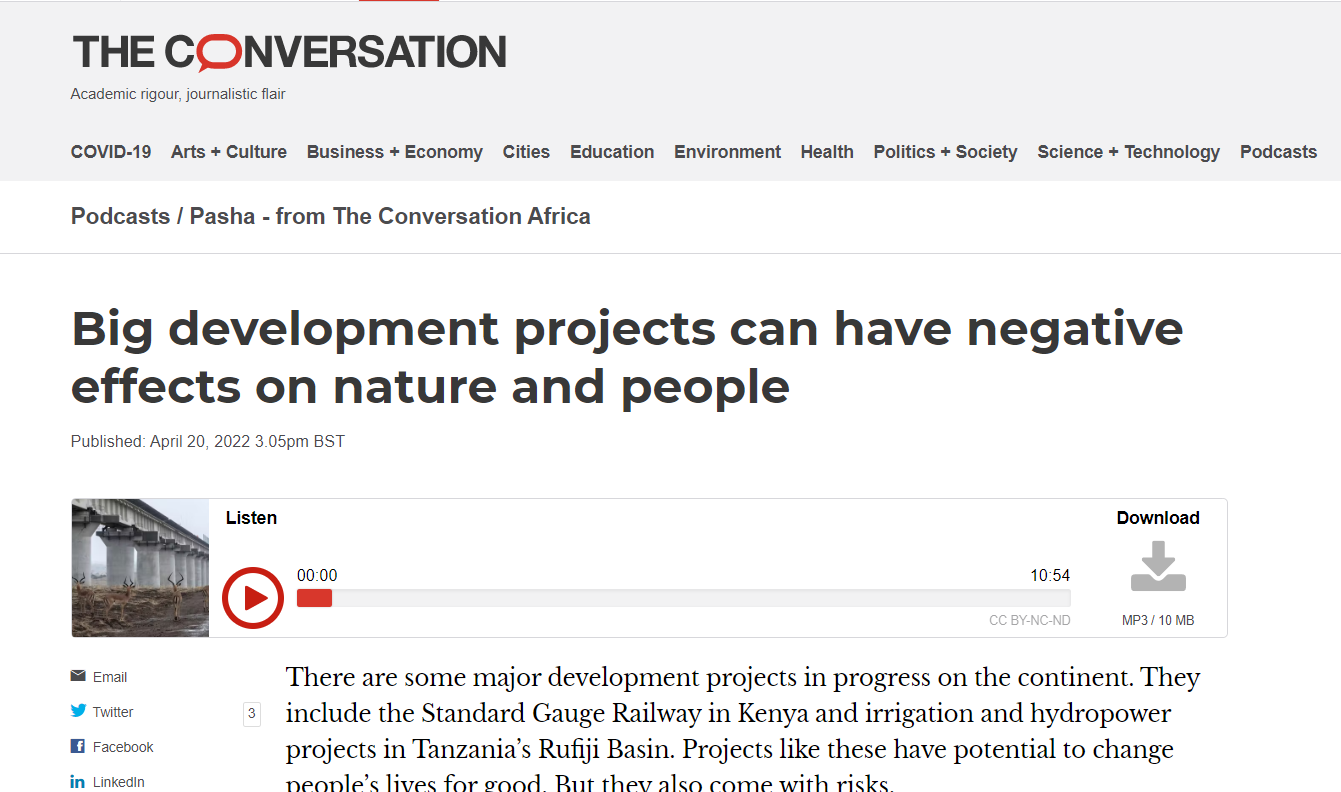Resource Directory
Filter on-page results
Resource types
- Synthesis resource
Classifications
- Planning
- Implementation
- Monitoring
Formats
- Online
- Video
Product types
- Blog Article
- Policy Brief
- Research Article
- Technical Brief
- Training Materials
- Webinar
(Showing 10 of 64 results)
Mitigating the Impacts of Development Corridors on Biodiversity: A Global Review
This research analysed peer reviewed literature on development corridors, in response to three key questions:(i) how impacts on biodiversity and ecosystem services are assessed; (ii) what mitigation measures are discussed to manage these impacts; and (iii) to what extent do these measures approximate to best practice. Conclusive evidence suggests from this analysis that academic literature on development corridors does not give sufficient consideration to comprehensive mitigation of biodiversity impacts. To change this, impact assessment research needs to acknowledge the complexity of such multi-project and multi-stakeholder initiatives, quantify biodiversity losses due to the full suite of their potential direct, indirect and cumulative impacts, and follow all the steps of the mitigation hierarchy impact framework.Key Messages presentation
Key findings and lessons learned from across the research and capacity building initiatives of the Development Corridors PartnershipMaking Infrastructure Resource Efficient
This policy brief identifies a critical need to decouple economic growth from the extraction and use of natural resources. Infrastructure development is particularly resource intensive, and contributes heavily to the global material footprint. Increasing the resource efficiency of infrastructure can be a major driver of the transition to sustainable development. It is now vital that policymakers and planners recognize the interlinkages between natural resources, material resource use, and the diverse and complex systems of infrastructure that are required to support economic and human development.The African Development Corridors Database: a new tool to assess the impacts of infrastructure investments
The large-scale expansion of built infrastructure is profoundly reshaping the geographies of Africa, generating lock-in patterns of development for future generations. Understanding the impact of these massive investments can allow development opportunities to be maximised and therefore be critical for attaining the United Nations’ Sustainable Development Goals and African Union’s Agenda 2063 aims. However, until now information on the types, scope, and timing of investments, their evolution and spatial-temporal impact was dispersed amongst various agencies. We developed a database of 79 development corridors across Africa, synthesizing data from multiple sources covering 184 projects on railways, wet and dry ports, pipelines, airports, techno-cities, and industrial parks. The georeferenced interlinked tabular and spatial database includes 22 attributes. We expect this database will improve coordination, efficiency, monitoring, oversight, strategic planning, transparency, and risk assessments, among other uses for investment banks, governments, impact assessment practitioners, communities, conservationists, economists, and regional economic bodies.Module 2: To improve the ability of development corridors to meet sustainability standards
This module (Module 2) will enable you to critically assess the sustainability of corridor decisions in light of the social and environmental risks and opportunities, exemplified through Kenyan and Tanzanian corridor case studies in Module 1. Comprehensive social and environmental considerations should be included by corridor financiers from the earliest stages of a project, for the best chances of mitigating biodiversity and ecosystems service loss, as well as establishing equitable social benefits. Financiers should also plan for iterative negotiation stages to enable more sustainable, inclusive, equitable benefits to result from the construction of development corridors for people and nature. The good news is that many of the tools needed for development banks and financing bodies to improve decision-making for more sustainable outcomes are available, accessible and ready to be used. Now, you have the opportunity to explore a selection of these tools and resources and assess how you might enhance sustainability within development initiativesModule 1 Introduction: What is a development corridor?
This module, Module 1, is split into three Sections based on corridor development stages, namely Planning, Implementation, and Monitoring and Evaluation, explored under sub-sections focused on People, Nature, and Climate. Each section will also have recommended tools and solutions at the end of each stage, as well as many links to additional reading and resources. You will then be able to apply these learnings in Module 2.Four steps for the Earth: mainstreaming the post-2020 global biodiversity framework, Briefing Note
A new framework for implementing global commitments to restoring nature, The Mitigation and Conservation Hierarchy, or Four Steps for the Earth. This is an approach to change our overall impacts on nature from negative to positive in four distinct steps, the ‘4Rs’:refrain, reduce, restore and renew.The refrain step involves avoiding negative impacts on nature as far as possible. The reduce step involves minimising damage to nature where it cannot be completely avoided. The restore step involves remediating any immediate damage to nature. The renew step involves investing in revitalising nature.Future proofing infrastructure to address the climate, biodiversity, and pollution crises
The brief reviews the impacts of climate change on infrastructure and the impacts of infrastructure on society and the environment (in particular, biodiversity loss and pollution). It provides guidance on how businesses that build public or private infrastructure can increase their resilience and drive innovation in the future.Ufupisho wa mabadiliko ya tabianchi: Taarifa ya mabadiliko ya tabianchi katika Ukanda wa Maendeleo Kusini mwa Tanzania
A short collaborative, synthesis brief on the major climate change findings from the Development Corridors Partnership, curated specifically for aiding future SAGCOT climate change planning. Key findings suggest that as well as increasing temperatures, the main climate signal for SAGCOT is one of greater variability, particularly in rainfall. (Swahili version)x.Podcast: Big development projects can have negative effects on nature and people
A short podcast discussing major infrastructure projects on the continent from a variety of perspectives
(Showing 10 of 64 results)
Synthesis resources
The diverse development corridor research carried out by the DCP has been synthesised into many accessible outputs to help different stakeholders access the most relevant evidence to improve their decision-making. These key outputs can be found below:
© 2025 WCMC
